Puglia
Italy has 21 regions but during the Master course we are going to focus on 10 of the most important regions, spending about 2 to 3 days per region. We start the course in Southern Italy in an area called Puglia. I am familiar with this area as it was the first region of Italy I visited and studied in. The Chef from Puglia is Chef Peppe Zullo, who happens to be friends with Chef Dominico Maggi who I studied with over 10 years earlier.
Puglia is one of Italy largest regions and is the second largest producer of olive oil after Sicily. The olive oil from Puglia tends to be full flavored with a peppery finish, I particular like the olive oil from this region; in general I would pick it over Tuscan oil for it flavor and richness. The chef stressed several very interesting points:
v Cuisina Povera – It is a cuisine based on poverty. It is a fairly poor region of Italy. In fact we did not cook meat in the two days. The pasta is made only with flour and water, no eggs. Bread is used extensively as a stuffing.
v Terra to Tavola – from the earth to the table. The chef brought with him all kinds of wild (selvatico) herbs and plants. This I remember from my visit, we constantly passed by people on the side of the road with brown bags, or baskets picking wild fennel, asparagus, lemon verbena, onions, chicory, dandelion greens, rappini, borage, arugula, laurel , and other plants.
v Food at Kilometer Zero – Eat what you have growing in your immediate vicinity! This is why I wanted to come here! Thankfully this trend is growing in the US, get out and buy food from your local farmers!
We made a very interesting pasta dish of the very poor with Grano Arso, burnt wheat. The flour is almost black and smells of smoke. After the wheat harvest the fields are burned to start to be prepared for next year, people will collect the burnt pieces of wheat left in the field and make flour out of it. The smell was strong, but the taste was actually fairly delicate, you could taste the smoke but it was not over powering. We served it with a simple sauce of EVO, garlic, and tomatoes.
We made a lot of items in two days, I may gain 50 pounds: Polpette di Pane, Orecchiette E Cime de Rape, Hand Cut Pasta with Stuffed Cuttlefish, Pancotto (cooked Bread 5 Ways), Handmade Fusilli Pasta Tomato and Wild Fennel, Hand Made Cavatelli di Grano Arso, Hand Cut Pasta with Mixed Wild Greens, Carpaccio of Articoke with Lemon, Olive Oil, & Pecorino, Raw Fava Bean Salad with Mint and Ricotto, Dried & Cooked Fava Beans with Wild Chicory(One of the main dishes of this area), Articoke Primavera – boiled spring artichoke with Mint, Balsamic, and EVO, Tagiolini di Finocchi in Salsa di Arancia (Shaved Raw Fennel with Blood Orange Syrup , Pecorino, and EVO), Wild Asparagus with Mint, Crostini al Marascivolo (Mustard Greens), Pasta Fagoli with Cavatelli, Orecchiette with Borage and Chickpeas, Polpette di Pan con Fusilli
Cheese – Pecorino of sheep milk cheese is very popular in the region. But goats milk and cows milk cheeses are also popular. One cheese called Burata – is a cows milk cheese that when cut open reveals a creamy, buttery center-it is heavenly.
Puglese bread is very special-it is very hearty and has a very thick crust – we used it in many of the preparations.
Wednesday, May 7, 2008
Subscribe to:
Post Comments (Atom)




































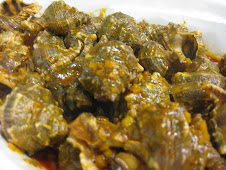




























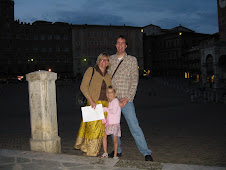











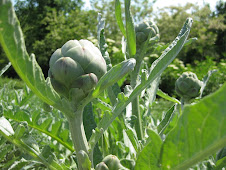


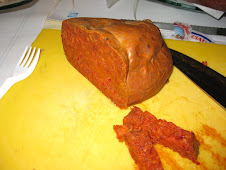
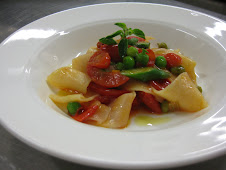




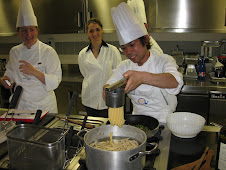











2 comments:
The spread looks amazing, I hope you are getting in some serious walking to balance out all the pasta. Very rustic, did your bread rise in a basket? I think the class may have met your expectations!
Plenty of walking - not sure if it will balance out in the end though- so far I am very happy with the class!
Post a Comment